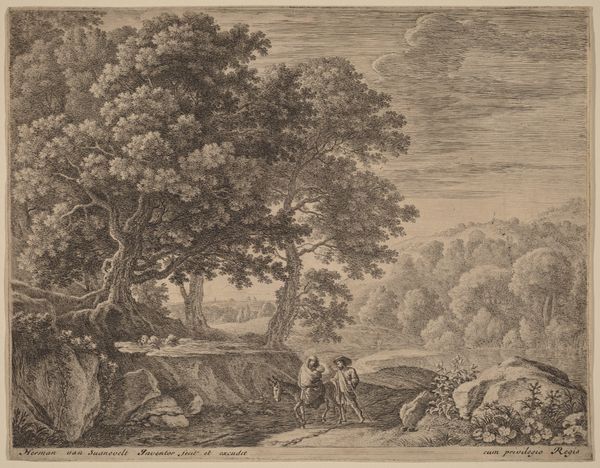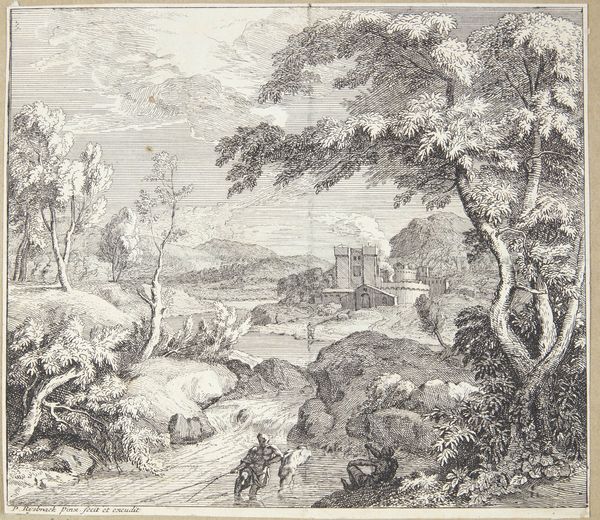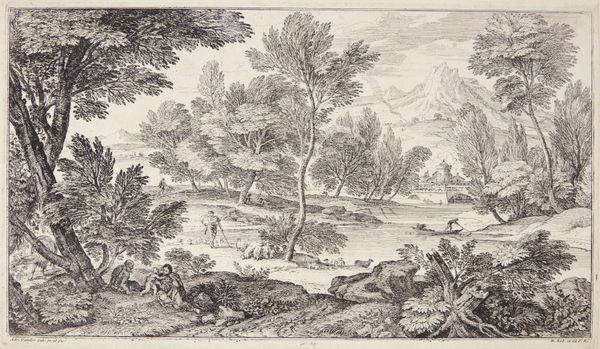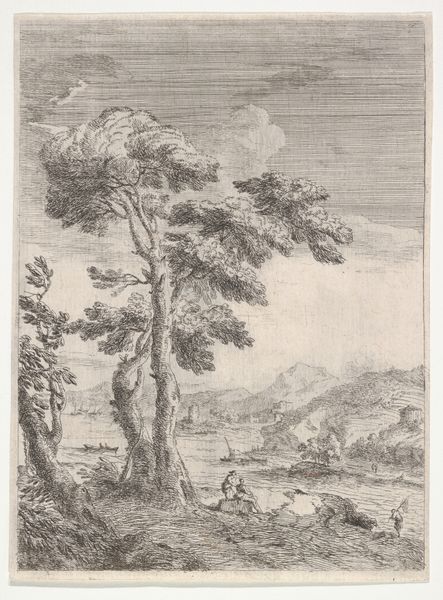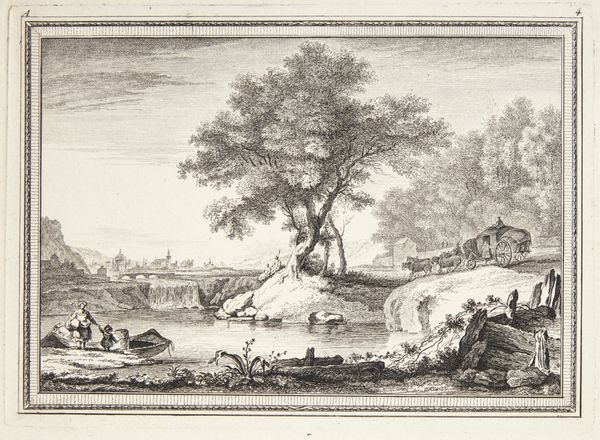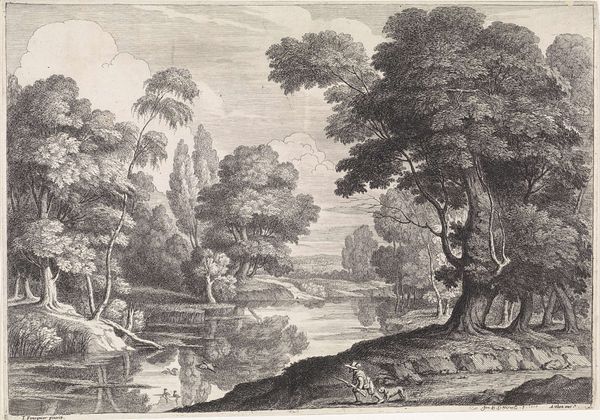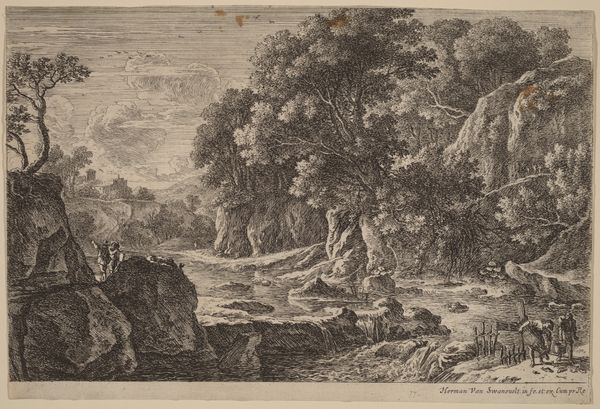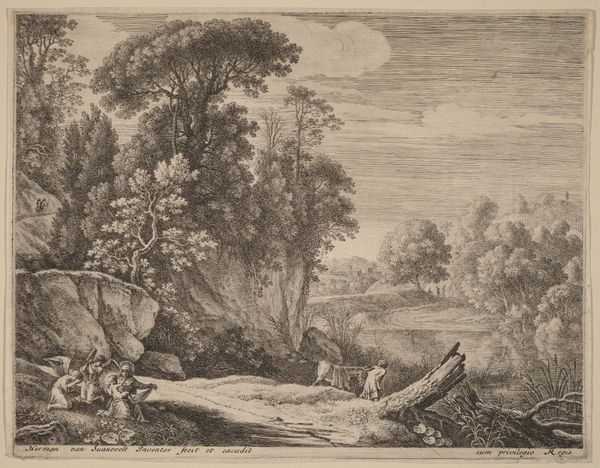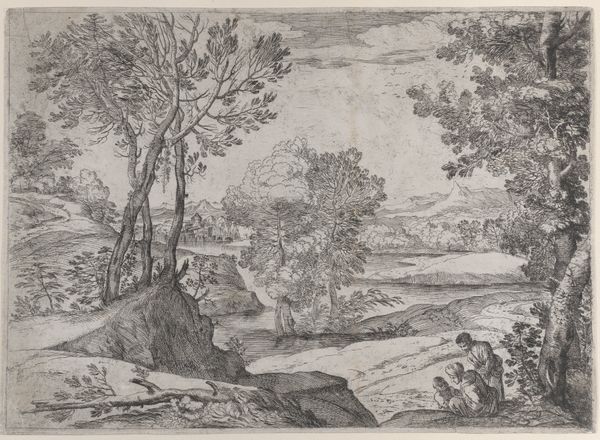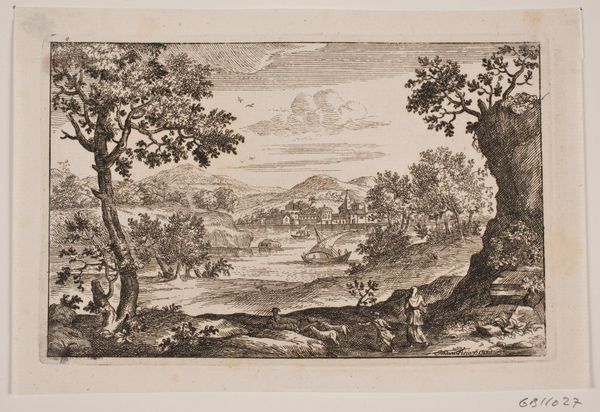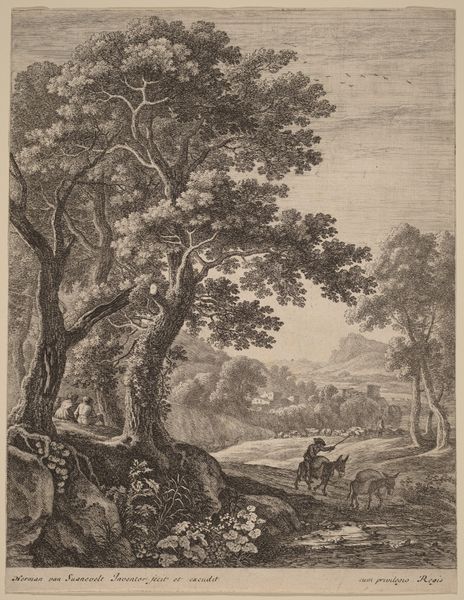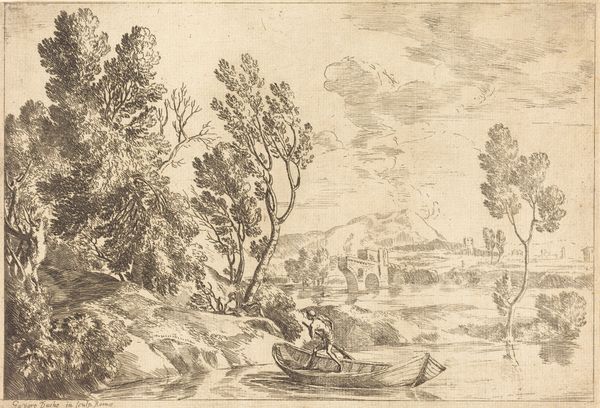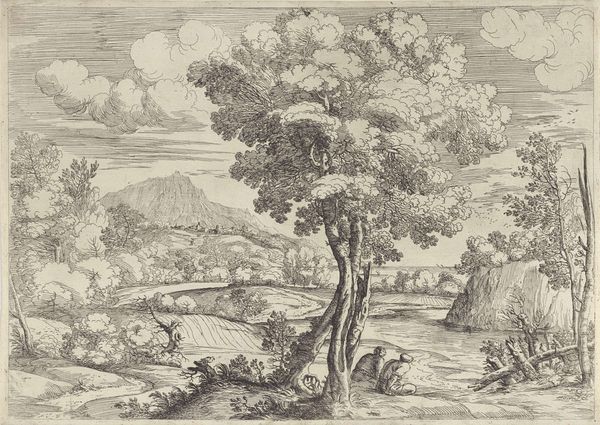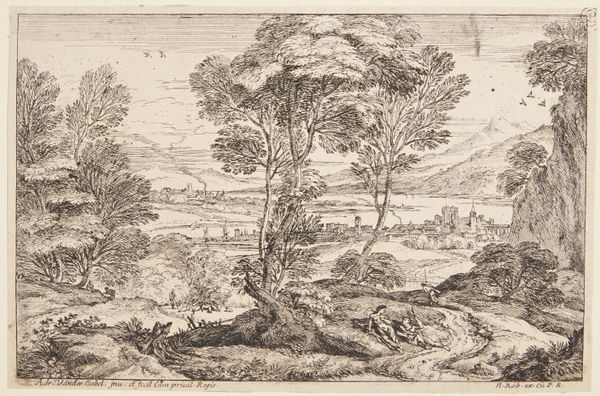
drawing, ink, indian-ink, graphite
#
pencil drawn
#
drawing
#
amateur sketch
#
light pencil work
#
pencil sketch
#
landscape
#
ink
#
german
#
pencil drawing
#
indian-ink
#
pen-ink sketch
#
15_18th-century
#
graphite
#
pencil work
#
watercolour illustration
#
pencil art
#
watercolor
Copyright: Public Domain
Editor: So, this is Franz Kobell’s "Mountainous Landscape under Heavy Clouds," done with pen, ink and graphite. It evokes a really interesting mood for me, kind of a melancholic beauty, especially with that looming sky. What do you see in this piece that gives it such a distinct atmosphere? Curator: It’s fascinating how Kobell uses landscape not just as scenery, but as a reflection of broader cultural anxieties. Consider the context: the late 18th century, a period of social upheaval. Does the "heavy cloud" perhaps symbolize political storms gathering on the horizon? What role did institutions such as the Städel Museum, where it is now held, play in preserving and shaping landscape’s evolving appeal? Editor: That’s a cool idea. I hadn’t really thought about the historical perspective. So, is the landscape reflecting the turbulence of the time, rather than just being a pretty scene? Curator: Precisely. The composition is not simply an objective observation of nature, but rather a stage upon which socio-political narratives play out. What does it mean to portray an idealized natural world during a time of great human strife? What social class could afford to enjoy or create such scenery? Who benefits from it, and how is it framed for public consumption through art institutions? Editor: That's a perspective shift for me! I always looked at landscapes as escapist, beautiful… but your points give me food for thought on how politics and institutions shape artistic choices and interpretations. Curator: And how our *present* perspectives do too! We interpret through layers of history. Thinking about art history's constant evolution reveals how dynamic landscape can be. Editor: Definitely. It’s made me think more critically about what I'm looking at. Thanks. Curator: Likewise! Considering context can add such depth to the aesthetic.
Comments
No comments
Be the first to comment and join the conversation on the ultimate creative platform.
